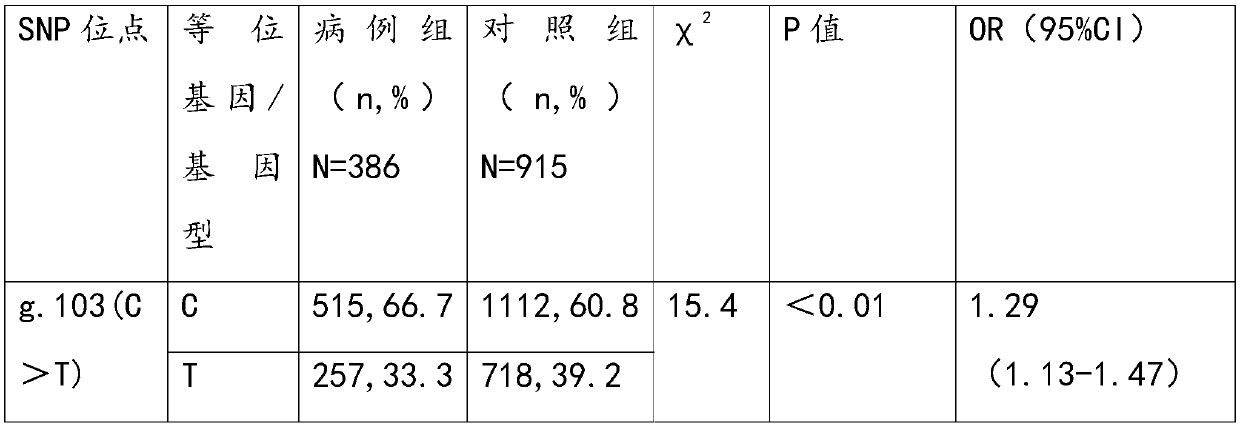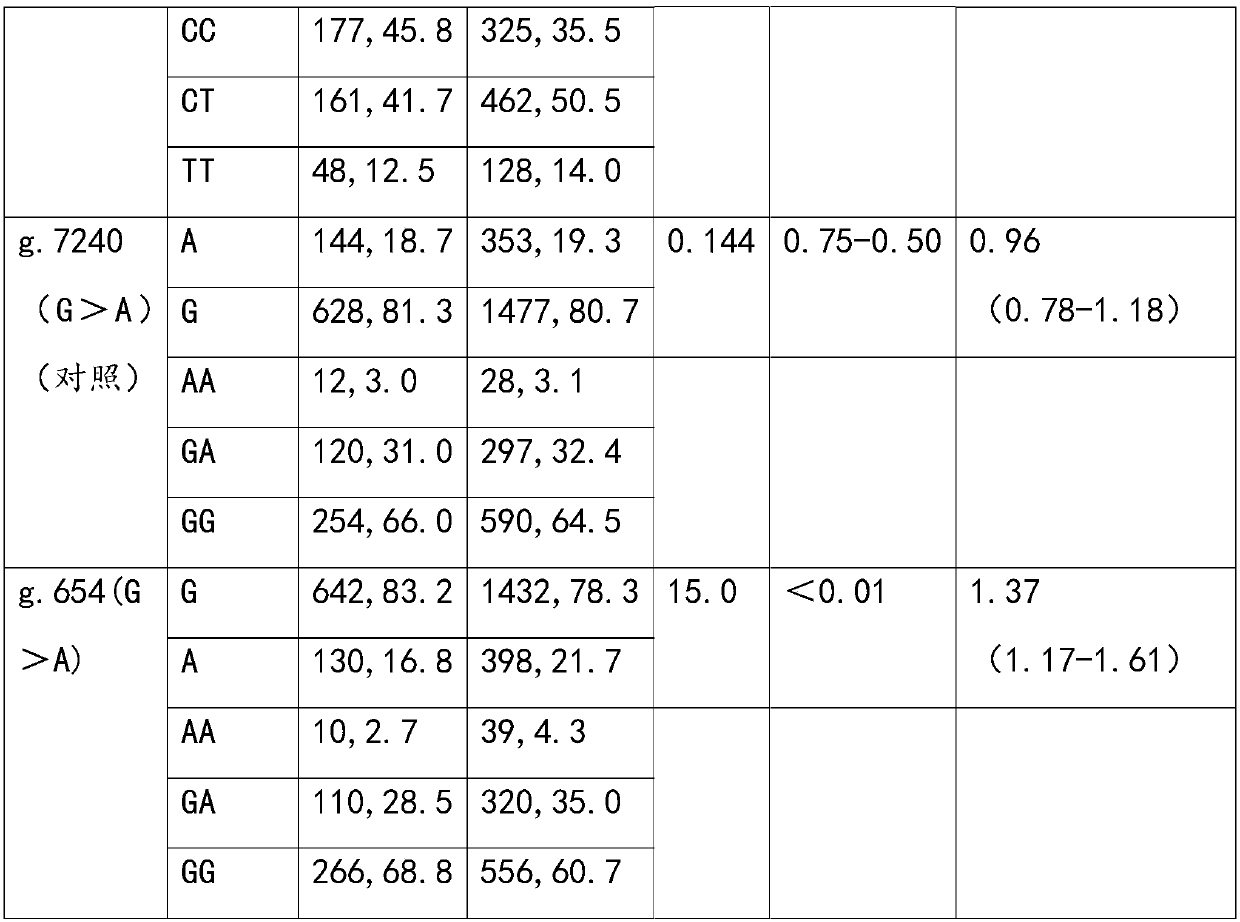Application of TRPV5 gene SNP locus in detecting susceptibility to heavy-metal poisoning
A heavy metal and susceptibility technology, applied in the field of biomedical molecular detection, to achieve the effect of controlling detection costs, reducing manual operations, and taking into account accuracy
- Summary
- Abstract
- Description
- Claims
- Application Information
AI Technical Summary
Problems solved by technology
Method used
Image
Examples
Embodiment 1
[0056] Example 1. The two newly discovered SNP sites on the TRPV5 gene are related to the susceptibility to heavy metal (lead) poisoning (case-control analysis)
[0057] 1. Taking 1301 Chinese Han workers who have been exposed to lead-contaminated work environment for a long time (over 2 years) as the research object, according to GBZ 37-2002 Occupational Chronic Lead Poisoning Diagnostic Criteria, people with blood lead ≥400μg / L are regarded as high In the blood lead group (ie, lead poisoning susceptible group, case group), people with blood lead 0.05).
[0058] The above-mentioned blood lead determination uses the American ESA company 3010B blood lead analyzer by anodic stripping voltammetry to determine the blood lead content.
[0059] 2. Detect the g.103 (C>T) and g.654 (G>A) genotypes of the above-mentioned high blood lead group (lead poisoning susceptible group) and low blood lead group. It is known that the SNP site g.7240 (G>A) that is not related to lead poisoning susceptib...
PUM
| Property | Measurement | Unit |
|---|---|---|
| density | aaaaa | aaaaa |
Abstract
Description
Claims
Application Information
 Login to View More
Login to View More - R&D
- Intellectual Property
- Life Sciences
- Materials
- Tech Scout
- Unparalleled Data Quality
- Higher Quality Content
- 60% Fewer Hallucinations
Browse by: Latest US Patents, China's latest patents, Technical Efficacy Thesaurus, Application Domain, Technology Topic, Popular Technical Reports.
© 2025 PatSnap. All rights reserved.Legal|Privacy policy|Modern Slavery Act Transparency Statement|Sitemap|About US| Contact US: help@patsnap.com



